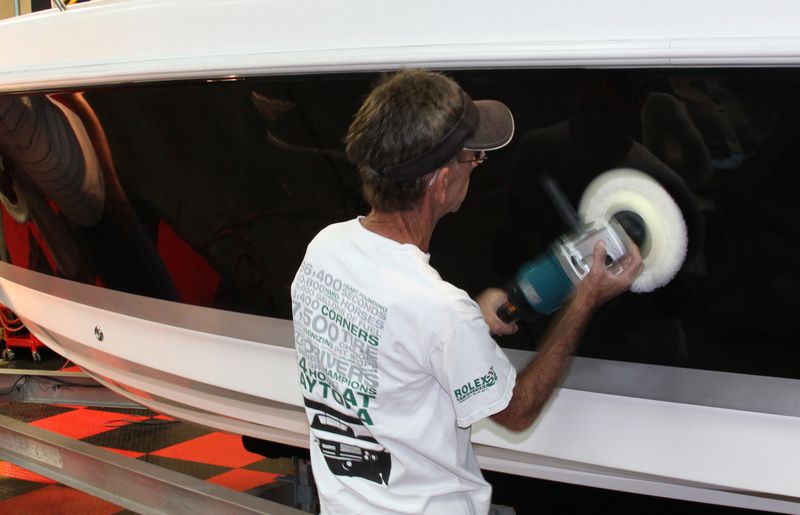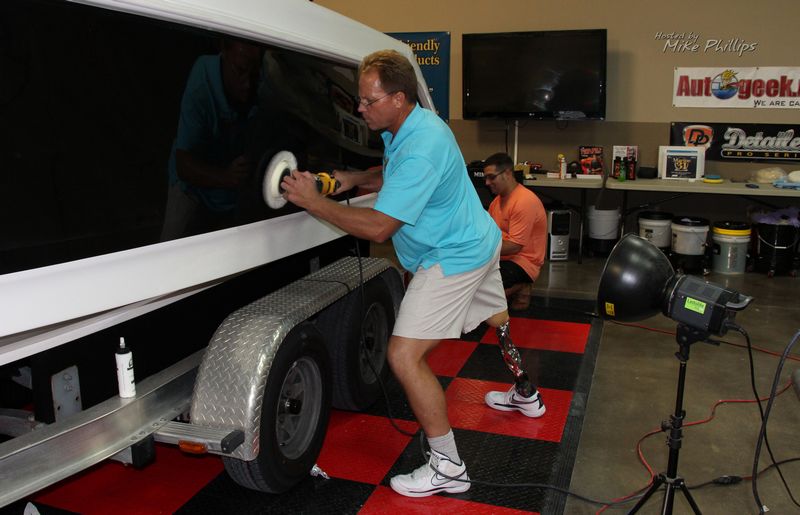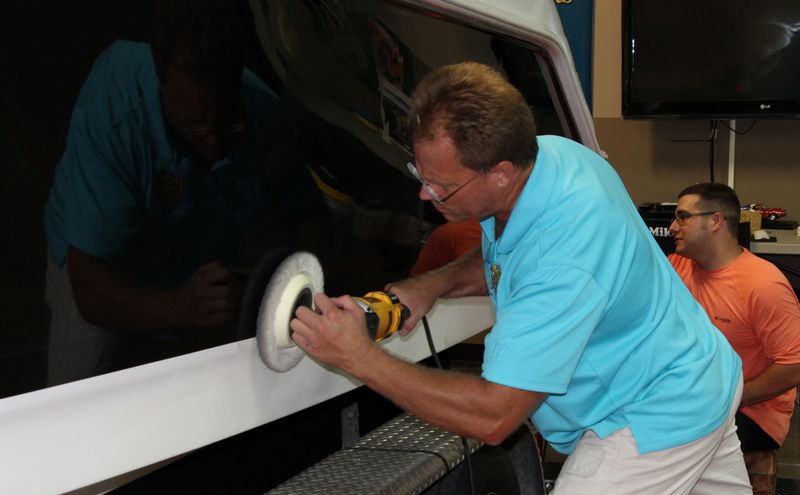2 things for sure,
1. You're learning.
2. You are improving the condition of the gel-coat
When your wool pads get here you should see better results faster.
Cutting the oxidized gel-coat off a boat is not an easy task. Last summer when we buffed out one of our project boats most of the guys were brand new to using a rotary buffer and brand new to buffing out a gel-coat boat.
While everyone did a good job I ended up going over a few places because in good light you could see the oxidation was still present.
The difference between how I buffed and how the new guys buffed was in the pressure applied to the hull with the buffer while buffing.
Here's the project,
24' Pro-Line Boat - Extreme Marine Makeover - Oxidation Removal
Here's one of the new guys running a rotary buffer with an 11" wool cutting pad. See how he's standing? See how his right arm is in a dropped position mostly just holding the buffer up?

Now look how I'm standing and holding the rotary buffer....
This is how you lean into the buffer....

DeWALT 849X sans handle and grabbing the rubber overmold on the head of the unit and the pushing down hard...

I'm LEANING into the buffer. Look at my left arm it's not dropped down it's pushing in towards the hull. I'm pushing on the rotary buffer with some hard pressure. This is what I call chopping as I'm chopping off gel-coat.
Buffing out oxidized boat is hard work. I tell guys this all the time, in fact I posted this to a rotary buffer thread just this morning on AGO
My post on how to use the rotary buffer
Note the bold read list item...
- Teach yourself the 10 @ 10 Technique for picking up a bead of product. If you haven't read my article on this Google it and add my name.
- Get a nylon brush for cleaning foam pads and a steel spur for cleaning wool pads
- You don't have to buff at high speeds, modern compounds are designed to work at low speeds.
- You don't need heat to break down abrasives, that's a urban legend that never dies.
- You can finish out hologram free but the only way to truly know is to chemically strip the paint and then inspect under full overhead bright sunlight.
- Use flexible backing plates, the compress to provide extra cushion when buffing curved panels.
- Throw the D-handle away and place your hand directly onto the rubber overmold or use the stick handle.
- Join a gym and work out, using a rotary buffer will tax your arms, shoulders, back, legs more than any other tool especially with large pads and long projects.
- Hold the buffer close to you when buffing to give you leverage over the tool, don't hold it loosey-goosey as some say.
- Smaller pads are easier to control than larger pads. Thicker pads on a rotary buffer are better than thinner pads.
It takes practice to get good with a rotary buffer, like Ringo Star sings....
It don't come easy...
You can do it!
